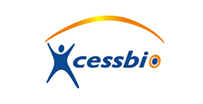
| Chemical Name: | (5-(2,4-bis((S)-3-methylmorpholino)pyrido[2,3-d]pyrimidin-7-yl)-2-methoxyphenyl)methano |
| Molecular Weight: | 465.54 |
| Formula: | C25H31N5O4 |
| Purity: | ≥ 98% |
| CAS#: | 1009298-09-2 |
| Solubility: | DMSO up to 100 mM |
| Storage: | Powder:4oC 1 year DMSO:4oC3 month-20oC 1 year |
AZD8055 is a highly potent, selective and ATP-competitive mTOR inhibitor (IC50 = 0.8 nM). It has >1,000-fold selectivity against all PI3K isoforms (α, β, γ, δ) and other members of the PI3K-like kinase family (ATM and DNA-PK). It has no significant activity against a panel of 260 kinases at concentrations up to 10 µM. AZD8055 inhibits the phosphorylation of mTORC1 downstream targets (p70S6K and 4E-BP1) as well as phosphorylation of the mTORC2 downstream proteins (e.g., Akt). The rapamycin-resistant T37/46 phosphorylation sites on 4E-BP1 can be fully inhibited by AZD8055, resulting in significant inhibition of cap-dependent translation. AZD8055 potently inhibits proliferation of U87MG, A549 and H838 cells with IC50 of 53, 50, and 20 nM, respectively. It also induces autophagy and increases LC3-II levels in H838 and A549 cells. AZD8055 decreases AML blast cell proliferation and cell cycle progression, reduces the clonogenic growth of leukemic progenitors, and induces caspase-dependent apoptosis in leukemic cells but not in normal immature CD34+ cells. It also shows significant antitumor activity in many xenografts, including U87MG, BT474c, A549, Calu-3, LoVo, SW620, PC3 and MES-SA at a dose of 10-20 mg/kg. AZD8055 was previously evaluated in a phase I clinical study in patients with advanced tumors.
How to Use:
In vitro: AZD8055 was used at 2.5 µM concentration in vitro and cellular assays.
In vivo: AZD8055 was orally dosed to mice at 2.5-20 mg/kg once or twice per day to inhibit tumor growth.
Reference:
- 1. Chresta CM, et al. AZD8055 is a potent,selective, and orally bioavailable ATP-competitive mammalian target ofrapamycin kinase inhibitor with in vitro and in vivo antitumor activity.(2010) Cancer Res. 70(1):288-98.
- 2. García-Martínez JM, et al. Effect of PI3K- and mTOR-specific inhibitors on spontaneous B-cell follicular lymphomas inPTEN/LKB1-deficient mice. (2011) Br J Cancer. 104(7):1116-25.
- 3. Jiang Q, et al. mTOR kinase inhibitor AZD8055enhances the immunotherapeutic activity of an agonist CD40 antibody incancer treatment.(2011) Cancer Res. 71(12):4074-84.
- 4. Huang S, et al. Inhibition of mTOR kinase byAZD8055 can antagonize chemotherapy-induced cell death through autophagy induction and down-regulation of p62/sequestosome 1. (2011) J Biol Chem.286(46):40002-12.
- 5. Willems L, et al. The dual mTORC1 and mTORC2 inhibitor AZD8055 has anti-tumor activity in acute myeloid leukemia.(2012) Leukemia. 26(6):1195-202.
- 6. Holt SV, et al. Enhanced apoptosis and tumor growthsuppression elicited by combination of MEK (selumetinib) and mTOR kinaseinhibitors (AZD8055). (2012) Cancer Res. 72(7):1804-13.
- 7. Naing A, et al. Safety, tolerability, pharmacokinetics and pharmacodynamics of AZD8055 in advanced solid tumours and lymphoma. (2012) Br J Cancer. 107(7):1093-9.
- 8.Pike KG, et al. Optimization of potent andselective dual mTORC1 and mTORC2 inhibitors: The discovery of AZD8055 andAZD2014. (2013) Bioorg Med Chem Lett. In press.
 AZD8055_spec.pdf
AZD8055_spec.pdf
 AZD8055_MSDS.pdf
AZD8055_MSDS.pdf
Products are for research use only. Not for human use.
ebiomall.com






>
>
>
>
>
>
>
>
>
>
>
>
我用conA和LPS分别刺激脾细胞,当然细胞均有明显的增殖,可是如果把这两种有丝分裂原同时用来刺激细胞时,细胞的增殖明显受到了抑制,比起单独采用ConA或者LPS都低很多。conA和LPS分别刺激T细胞和B细胞的增殖,两者同时加入时,作用应该更强,为什么反而大幅减弱呢?
此外,我研究的这种成分单独刺激皮细胞时,细胞也有一定程度的增殖,但是如果这种物质与conA联合使用时,比起单独用conA时,细胞的增殖程度明显降低了一些,这又是什么原因呢?难道可以解释为我研究的这种物质有类似于LPS的作用——刺激B细胞增殖?
如果真的是这样来解释,哪位大侠能把第一个现象(conA和LPS共同作用产生拮抗)的机理帮我解释一下呢?
当抗体结合到示踪剂上时,340nm的激发光激发铕标分子,导致能量转移到Alexa Fluor 647染料上,结果产生665nm的发射光。荧光的强度与样品中的cAMP含量成反比。
本试剂盒用于检测在GPCR激动剂刺激下活细胞或者细胞膜制备品产生的cAMP。对于偶联Gαs的受体,激动剂刺激导致665nm的荧光强度降低,而拮抗剂则可以逆转这一效应;对于偶联Gαi的受体,在激动剂刺激的同时用forskolin刺激cAMP产生,那么激动剂则抑制forskolin诱导的cAMP的生成,因此对照只给forskolin的细胞组可以通过665nm荧光强度的增加反应激动剂的效应。
该试剂盒的灵敏度很高,室温下反应在20h内是稳定的。本试剂盒适用于在384孔板中进行24μl的微量分析。
2.保存条件
避光2~4℃保存,过期时间见装。
3.盒内试剂
cAMP标准品:1管,1ml。(50μM)
生物素标记的cAMP(b-cAMP):1管,25μl。
铕标的抗生物素蛋白链菌素:1管,25μl。
荧光标记的cAMP抗体:1管,40μl。
检测缓冲液:1瓶,25ml。
4.需要自配的其他溶液
l Hank’s balanced salt solution (HBSS): NaCl 8.0g、CaCl2 0.14g、KCl 0.4g、 KH2PO4 0.06g、Na2HPO4?7H2O0.09g、MgCl2.6H2O0.10 g、MgSO4.7H2O0.10 g、NaHCO30.35g、葡萄糖1.0g,加H2O至 1000ml (用7.5%NaHCO调节PH值=7.4)
l Versene消化液(1L):EDTA 0.372 g,NaCl 8.0g,KCl 0.20 g,KH2PO40.20g,Na2HPO4 1.15 g,D-glucouse 0.2 g,pH 7.4
l HEPES缓冲液(1mol/L):取2.383gHEPES溶于10ml去离子水中。
l 7.5%BSA溶液:取0.75gBSA溶于10ml去离子水中
l 0.5M IBMX溶液:11.11mg IBMX溶于100μl DMSO中,-20℃冻存。
l 刺激缓冲液(SB):14 ml HBSS(1×)+75μlHEPES(1mol/L)+200μlBSA (7.5%)。(注:在测定细胞cAMP时,反应缓冲液中要加入IBMX 0.5mmol/L)
l 吗啡贮存液(10mM):盐酸吗啡37.585mg溶于10ml生理盐水中,0.22μm滤膜过滤除菌,4℃保存备用。
l 纳络酮母液(100mM):纳络酮4mg溶于100μl 生理盐水中,用时工作液按照1:500稀释,溶剂为含有IBMX的反应缓冲液。
抑制剂刺激细胞后,需要用PBS清洗后再做后续实验吗
我做的是细胞因子的刺激和抑制某条通路后观察是否有影响,分组为空白组,空白+抑制剂,刺激组,刺激+抑制剂,最开始用的单因素方差分析,LSD-T和SNK-Q检验,但是同学说我这里面有两个处理因素,所以不能单因素方差分析,应该直接空白和空白+抑制,空白和刺激,刺激和刺激+抑制剂进行独立样本T检验,现在脑子是混乱的,拜托园子里的大神们帮我看看,感激不尽!!









